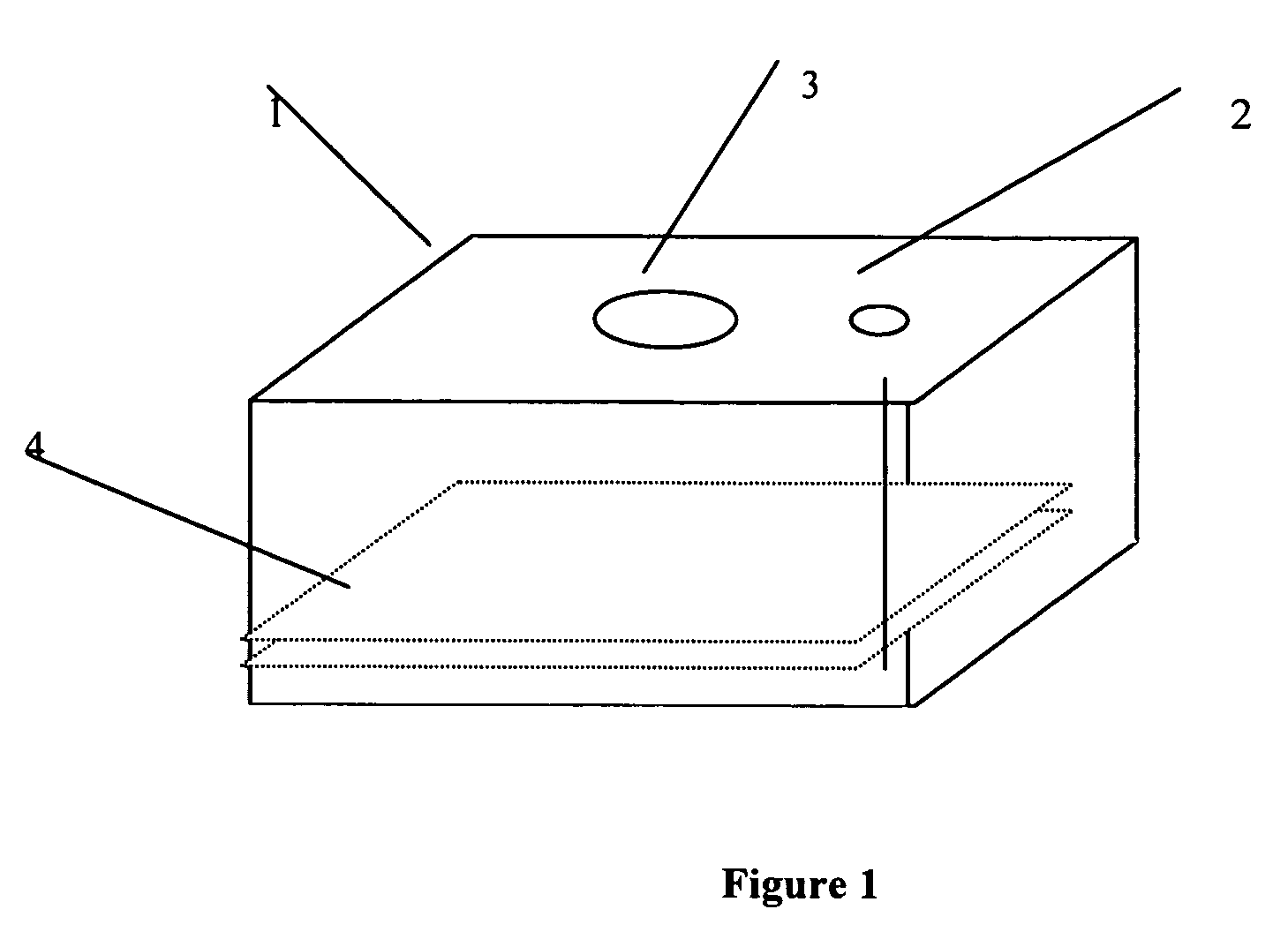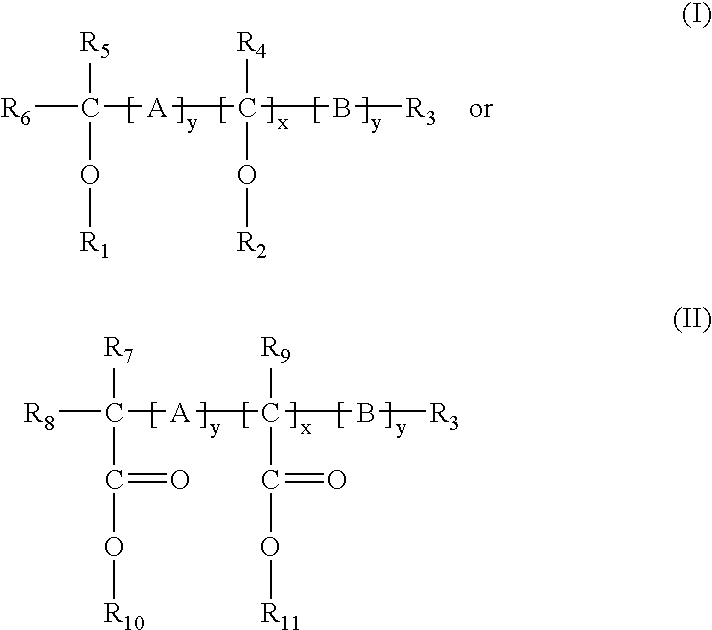Material for odor control
a technology for odor control and materials, applied in the direction of cellulose treatment using microorganisms/enzymes, non-fibrous pulp addition, microorganism/enzyme addition, etc., can solve problems such as offensive odors becoming an issu
- Summary
- Abstract
- Description
- Claims
- Application Information
AI Technical Summary
Benefits of technology
Problems solved by technology
Method used
Image
Examples
example 1
Effect of VIZORB® 3905 Treated with Zinc and Aluminum Salts on Ammonia Generation from the Solution of Urea
[0251] VIZORB® 3905 material was cut to rectangular sheets, approximately 10 cm by 20 cm so that each sheet weighed 5 grams. In order to obtain desired levels of aluminum and of zinc on the sheets appropriate amounts of either concentrated aluminum sulfate solution at 48% concentration by weight was diluted in demineralized water or solid zinc chloride was dissolved in demineralized water to make up the solutions for spraying. These amounts are listed in Table 1. Each sheet was then sprayed on both sides with a total of about 15 mL solution of the pre-weighed chemical according to the amount specified in Table 1 and left to dry in ambient conditions to not more than 10% moisture content.
TABLE 1Amount ofaluminum sulfateAmount ofsolution at 48%,solid zinc chloride,Zincg per 10 grams ofAluminum add-on,g per 10 grams ofadd-on,VIZORB ® 3905ppmVIZORB ® 3905ppm0.9270000.1150001.311...
example 2
Effect of VIZORB® 3905 Treated with NBPT on Ammonia Generation from the Solution of Urea
[0255] A 0.015 weight percent solution of NBPT in water was prepared and sprayed on 10 g of VIZORB® 3905, which was two handsheets having dimensions of 20 cm by 10 cm, in an amount of 1 mL of solution per gram of VIZORB® 3905 to obtain an add-on level of NBPT at 150 ppm. This procedure was followed by drying the sprayed sheets at ambient temperature. Some sheets were not treated and they served as control samples for the experiments. Both treated and untreated VIZORB® 3905 sheets were placed in the test containers as described in Example 1. The test solution of urea and sodium chloride in demineralized were mixed each with 0.8 mL of the U1875 urease solution per 200 mL of the test solution. Aliquots of 200 mL of the resultant solutions were used to insult the VIZORB® 3905 sheets in each test container, which had been previously equilibrated to a temperature of 37° C. The small outlet in the cont...
example 3
Effect of VIZORB® 3905 Treated with NBPT, Zinc Chloride and Aluminum Sulfate on Ammonia Generation from Urine
[0256] VIZORB® 3905 handsheets were treated to obtain various levels of the chemicals as described in Examples 1 and 2 to get add-on levels of theses compounds on VIZORB® 3905 as indicated in Table 4. Untreated sheets of VIZORB® 3905 served as control samples for the experiments. Both treated and untreated VIZORB® 3905 sheets were placed in the test containers as described in Examples 1 and 2. Urine was collected from healthy adult persons and mixed with 0.1 mL of the U1875 urease solution per 100 mL of urine. Aliquots of 100 mL of the resultant liquid were then used to insult the VIZORB® 3905 sheets in each test container, which had been equilibrated previously to a temperature of 37° C. The small outlet in the containers was opened quickly at defined time intervals to check the concentration of ammonia with the Draeger tubes. The results are shown in Table 4.
TABLE 4Time,...
PUM
| Property | Measurement | Unit |
|---|---|---|
| weight percent | aaaaa | aaaaa |
| mass | aaaaa | aaaaa |
| diameter | aaaaa | aaaaa |
Abstract
Description
Claims
Application Information
 Login to View More
Login to View More - R&D
- Intellectual Property
- Life Sciences
- Materials
- Tech Scout
- Unparalleled Data Quality
- Higher Quality Content
- 60% Fewer Hallucinations
Browse by: Latest US Patents, China's latest patents, Technical Efficacy Thesaurus, Application Domain, Technology Topic, Popular Technical Reports.
© 2025 PatSnap. All rights reserved.Legal|Privacy policy|Modern Slavery Act Transparency Statement|Sitemap|About US| Contact US: help@patsnap.com



